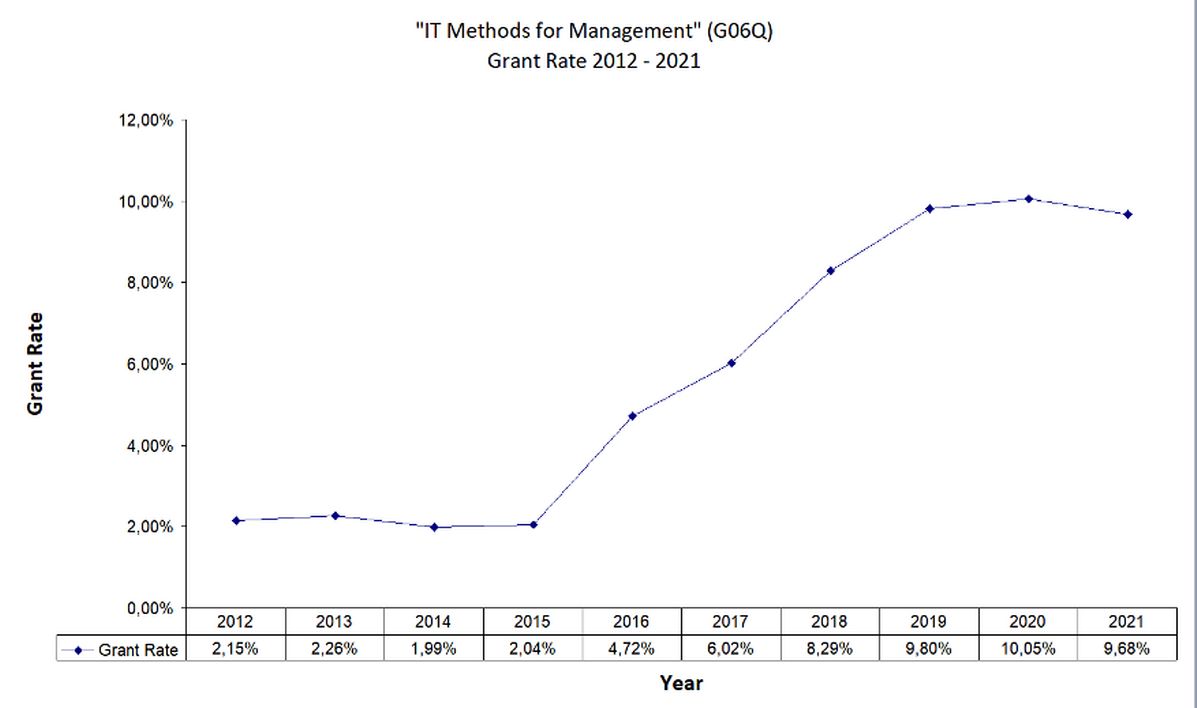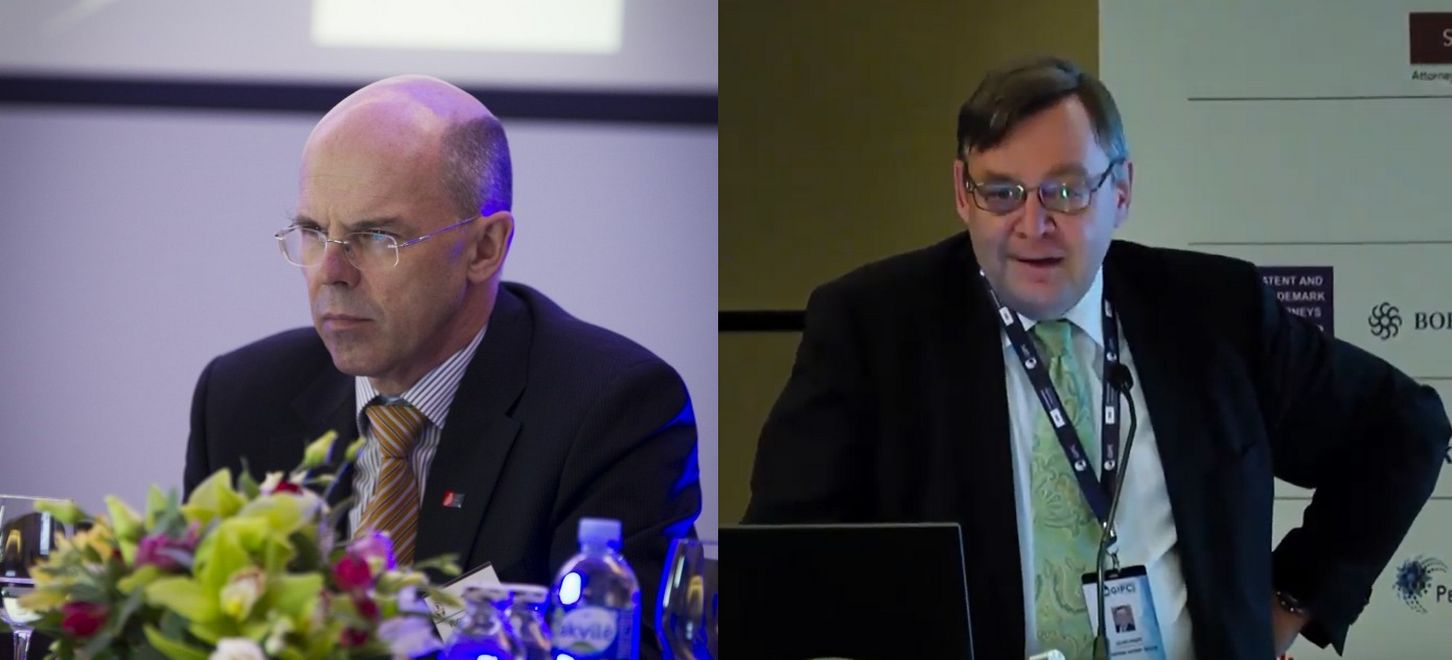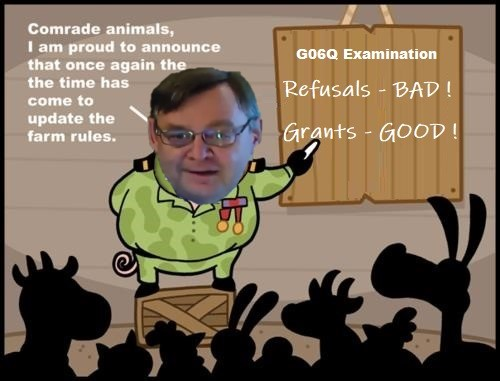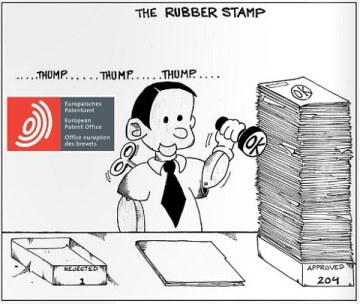

Despite a significant surge from 2016 onwards, the grant rate for "IT methods for management" (G06Q) remains relatively low, currently hovering around the 10% mark. However, rumours on the EPO grapevine indicate that a recent "changing of the guard" at managerial level is likely to lead to dramatic changes on this front.
In this part we will discuss the contents of a leaked e-mail which reportedly emanates from a EPO directorate in the ICT sector. According to informed sources, the directorate in question is the one responsible for computer-implemented "business and administrative methods" (CPC class G06Q).
"...between 2015 and 2020 the G06Q grant rate rose from the ultra-low 2% mark to its current level around the 10% mark. Nevertheless, this figure remains far below the EPO’s overall grant rate of 69%."As noted previously, grant rates in the G06Q area remain relatively low despite a noticeable upward "surge" from 2015 onwards.
To be more precise, between 2015 and 2020 the G06Q grant rate rose from the ultra-low 2% mark to its current level around the 10% mark. Nevertheless, this figure remains far below the EPO’s overall grant rate of 69%.
However, in recent months there has been been a "changing of the guard" at managerial level in the directorate in question. Rumours on the EPO grapevine suggest that this is likely to be accompanied by a dramatic shift in granting practice.
During the recent EPO "reorganisation" which took effect on 1 April 2022, the previous director in charge of this area, Christian Platzer from Austria, was replaced by his compatriot Georg Weber.

EPO director Christian Platzer (l.), formerly in charge of the G06Q area, and his successor Georg Weber (r.)

A leaked e-mail suggests that plans are already afoot to increase the grant rate in the G06Q area.
1. Search stage — An all-feature whole application search consideration should be taken, with all necessary classes considered - leading to 2. ESOP/WOISA with comparison point by point with prior art in PSA [problem-solution approach] with all features which imply, involve or affect a real world application or use given full consideration in differentiation. All these features then taken towards constructing an objective technical problem and a positive appreciation of how they technically solve that OTP.
[...]
3. For sufficiency (and clarity) it should be remembered that if there is a difference then it may well be that difference, however defined, which forms the inventive step. Care should be taken against unnecessarily limiting an applicant, if such a difference exists, to a narrowly construed version. 4. Where two options exist for how to analyse a claim (e.g. a priori consideration of what is technical/non-technical vs not doing so) then the former is considered to be 'circular' and would ‘never lead to allowable claims’. Accordingly the other option should be taken, to the benefit of the applicant. 5. The appropriate 'test' of the validity of approach is considered to be opposition, and appeaI-after-opposition. It should be remembered that the existence of appeals may be open to interpretation as a sign of low quality. 6. High levels of grant (99.6% in some cases) are not considered exceptional in the Office, and may even be a sign of high quality when user satisfaction is also high. 7. A change from a negative track to a positive one, even late in the substantive procedure, should be understood as a success in adherence to the high quality procedure above.
"The content of the E-mail is formulated in arcane EPO-Speak and managerial jargon, so its significance may not be immediately apparent to the uninitiated."Nevertheless, according to insiders, this internal communication - reportedly directed at EPO examiners - can be understood as heralding a significant change of policy for patent examination practice in the G06Q area.
The most relevant points derivable from the e-mail can be summed up as follows:
â⦠Examiners are advised that "[c]are should be taken against unnecessarily limiting an applicant" and that applications should be interpreted "to the benefit of the applicant".
â⦠Examiners are discouraged from issuing refusals. The rather dubious rationale given here is that this could lead to appeals and "the existence of appeals may be open to interpretation as a sign of low quality". It is not explained who might advance such an interpretation and whether or not it might have any substance. It seems that the mere fact that someone might do so should be enough to deter examiners from refusing an application.
â⦠Examiners are encouraged to regard "high levels of grant" as a desirable objective. A passing reference is made to 99.6% grant rates "which are not considered exceptional in the Office" but without any further details being provided as to the technical fields for which these grant rates apply. It is further asserted that such high levels of grant "may even be a sign of high quality when user satisfaction is also high".
â⦠Examiners are also encouraged to view "change from a negative track to a positive one" as a "success". This means that wherever the examination procedure starts out with a negative opinion that points towards a refusal, if the examining division happens to change its mind later on in the procedure and decide to grant, then this will be considered as a "success" [by EPO management].
The underlying "takeaway" from all this is that - as far as EPO management is concerned - "refusals are bad" and "grants are good".
"The underlying "takeaway" from all this is that - as far as EPO management is concerned - "refusals are bad" and "grants are good"."In other words, the E-mail sends a clear signal to examiners that "high levels of grant" are "a consummation devoutly to be wished" – irrespective of the kind of subject-matter contained in the patent application.
There can be little doubt that examiners in the G06Q area are being gently "nudged" in the direction of less refusals and more grants.

There can be little doubt that examiners in the G06Q area are being gently "nudged" in the direction of less refusals and more grants.